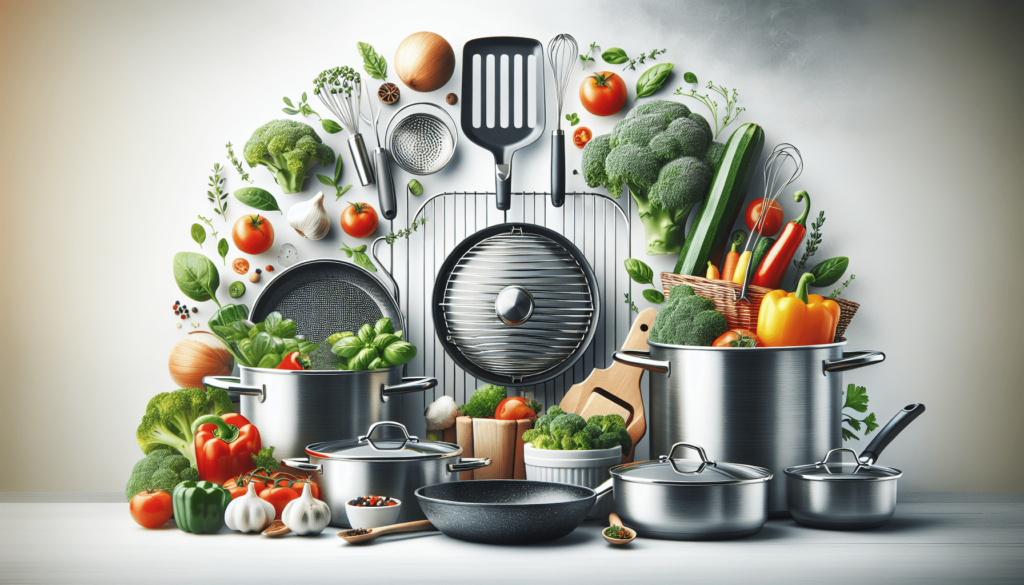Diving into the world of cooking, you’ve probably wondered how to retain the most nutrients in your meals while minimizing unhealthy fats. Well, you’re in luck! This article explores a variety of cooking methods that maximize health benefits without sacrificing taste. From steaming vegetables to preserve their color and nutrients, to grilling lean meats for that perfect char without the added oil, we’ve got you covered. Whether you’re a seasoned chef or a kitchen newbie, preparing delicious, healthy meals can be simple and enjoyable. Get ready to transform the way you cook with insights on the healthiest cooking techniques that ensure you’re fueling your body with the best. Ever wondered what the healthiest cooking methods are? In our quest for healthier eating habits, how we cook our food is just as important as what we eat. Cooking methods can impact not only the nutritional value of the food but also our health in ways we might not realize.

Understanding Cooking Methods
Cooking methods can be categorized broadly into three types: dry-heat, moist-heat, and no-heat methods. Choosing the right cooking technique can enhance flavor without adding unhealthy fats or losing key nutrients.
Dry-Heat Cooking
Dry-heat cooking methods include baking, roasting, grilling, broiling, and sautéing. These methods use hot air or fat to cook the food.
Baking and Roasting
Baking and roasting involve cooking foods with hot air circulating around them. This method is great for vegetables, meats, fish, and poultry. You maintain nutrients without needing to add much, if any, extra fat.
Health Benefits:
- Minimal nutrient loss
- No need for added fat
Grilling and Broiling
Grilling and broiling expose food to direct heat, either from below or above. This is a quick method that can add unique flavors, especially a smoky touch when grilling.
Health Benefits:
- Fat drips away from the food
- Minimal addition of fats
Sautéing
Sautéing is quick and uses minimal oil, and as a result, vegetables retain more of their nutrients and texture.
Health Tips:
- Use olive or avocado oil for a healthier fat option.
- Keep the heat moderate to avoid burning the oil.
Moist-Heat Cooking
Moist-heat cooking involves liquids, like water, broth, or steam. Techniques include boiling, steaming, poaching, and stewing.
Boiling
Boiling is simple: submerge food in water and boil. However, it’s not always the most nutrient-preserving method.
Health Tips:
- Boil in minimal water to reduce nutrient loss.
- Use the water as a base for soups to retain any leached nutrients.
Steaming
Steaming is arguably one of the healthiest cooking methods. Foods are cooked by the steam from boiling water, not the water itself, preserving nutrients and texture.
Health Benefits:
- Preserves color, texture, and nutrients
- No need to use fats
Poaching
Poaching involves cooking at a lower temperature than boiling. It’s ideal for eggs, fish, and poultry.
Health Benefits:
- Gentle on the food, preserving texture and flavor
- Minimal fat required
Stewing
Stewing allows you to cook tougher cuts of meat until tender using slow, moist heat. It can be very flavorful and nutrient-rich since the cooking liquid, which absorbs the nutrients, is also consumed.
Health Benefits:
- Meat becomes tender and easier to digest
- Vegetables and meats retain most of their nutrients
No-Heat Cooking Methods
No-heat cooking, as the name suggests, involves no heat. Think salad preparation, smoothie making, or assembling dishes like cold soups.
Raw Food Preparation
Eating foods raw preserves all their natural enzymes and nutrients that might be lost during cooking.
Health Benefits:
- Maximum nutrient retention
- No unhealthy additives
Cold Soups and Smoothies
These are great, especially in warmer weather, and can be packed with nutrients from fresh fruits and vegetables.
Health Tips:
- Use a variety of vegetables and fruits to maximize nutrient intake.
- Avoid adding extra sugars or unhealthy fats.
Comparing Cooking Methods
Let’s compare these methods to help you make an informed decision on what might be best for your health goals.
Chart: Nutrient Retention vs. Cooking Method
| Cooking Method | Nutrient Retention Level | Best Foods to Cook |
|---|---|---|
| Steaming | High | Vegetables, fish |
| Boiling | Medium | Eggs, pasta |
| Grilling | Medium-High | Meats, vegetables |
| Baking | High | Meats, breads |
| Sautéing | High | Vegetables, thin meats |
What Does This Mean for You?
Choosing a cooking method can depend on the type of food you’re preparing and what your nutritional needs are. For instance, if you’re looking to retain vitamin C in vegetables, steaming might be preferable over boiling.
Tips for Healthier Cooking
No matter which cooking method you choose, here are some universal tips to keep your meals healthy:
- Use Healthy Oils: Opt for oils with high smoke points and low saturated fats, such like olive oil or canola oil.
- Keep Seasonings Simple: Use herbs and spices instead of salt to enhance the flavor without the added sodium.
- Avoid Overcooking: Overcooking can destroy nutrients and alter the taste and texture of food.
- Incorporate Variety: Different cooking methods can bring out unique flavors and textures in your food, making your meals more enjoyable and diverse.
Conclusion
The healthiest cooking methods are those that preserve nutrients, reduce the addition of unhealthy fats and salts, and enhance the natural flavors and textures of the food. By understanding and applying different cooking techniques, you can not only create delightful meals but also contribute positively to your overall health. So next time you prepare a meal, consider steaming your vegetables or grilling your chicken for a nutritious and delicious experience!

